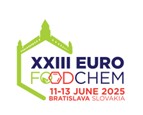Scientific journal
Journal of Food and Nutrition Research
Summary No. 3 / 2021
Askin, B.
Comparison of aroma profiles of essential oils extracted by hydro-distillation from orange peel waste dried by various methods
Journal of Food and Nutrition Research, 60, 2021, No. 3, s. 271-278
Buket Askin, Food Engineering Department, Kirklareli University, Kofcaz Street, Kirklareli 39100, Turkey. E-mail: buketaskin@klu.edu.tr, tel.: +905056664514, fax: +902882140514.
Received 2 March 2021; 1st revised 11 May 2021; 2nd revised 25 June; 3rd revised
Summary: Effects of oven-drying at 45 °C (OD45), oven-drying at 55 °C (OD55) and microwave-drying at 400 W, 560 W and 700 W (MW400, MW560, MW700) on the content of essential oil extracted using hydro-distillation were studied. To get the highest quality and quantity of essential oil, it is necessary to know the suitable methods for drying. The highest concentration of phenolic compounds was determined by UV-spectrophotometryfor OD45, MW400 and MW560, respectively. The highest essential oil yield that was obtained from OD55 samples and the lowest from MW700. Thirty-two components were identified by gas chromatography-mass spectrometry in essential oil samples, mostly oxygenated monoterpenes and hydrocarbon monoterpenes. The main components were limonene (87.4–90.7 %), β-linalool (2.0–3.7 %), beta-pinene (
Keywords: essential oil; hydrodistillation; microwave drying; orange
Download:
(pdf, 458.89 Kb, 723x)










